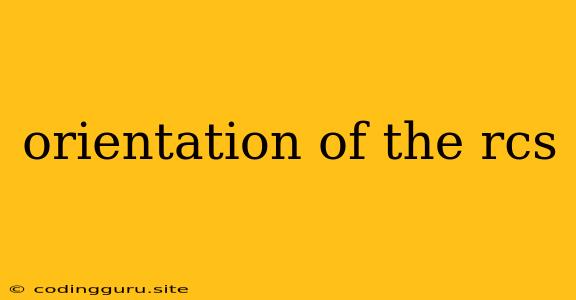Understanding the Importance of RCS Orientation
In the realm of radar technology, RCS (Radar Cross Section) plays a crucial role in determining how effectively a target can be detected. However, it's not just the RCS value itself that matters; the orientation of the RCS also significantly impacts radar detection. This article delves into the complexities of RCS orientation and its implications for various applications.
What is RCS Orientation?
Imagine a target, like an aircraft, being illuminated by radar waves. The RCS value represents the target's ability to reflect those waves back to the radar sensor. But the reflected signal strength isn't uniform in all directions. It varies depending on the target's orientation relative to the radar beam. This variation is referred to as RCS orientation.
Why is RCS Orientation Important?
Understanding RCS orientation is vital for several reasons:
- Stealth Technology: For stealth aircraft and other low-observable platforms, RCS orientation is a key design consideration. By carefully shaping the target's exterior and selecting materials that minimize reflections in certain directions, engineers can reduce the likelihood of detection.
- Target Identification: By analyzing the RCS orientation of a target, radar systems can differentiate between different types of objects. For example, a fighter jet will have a different RCS signature than a civilian aircraft, and this difference can be exploited for identification purposes.
- Radar Performance Optimization: Understanding RCS orientation allows radar designers to optimize the performance of their systems. They can strategically position antennas to maximize detection probability based on the expected orientation of the target.
Factors Affecting RCS Orientation
Numerous factors influence the RCS orientation of a target, including:
- Shape: The shape of the target plays a major role in how radar waves are reflected. Flat surfaces tend to reflect waves back towards the source more strongly than curved surfaces.
- Material: The materials used in the construction of the target significantly affect its reflectivity. Conducting materials like metals reflect radar waves strongly, while non-conducting materials like plastics are less reflective.
- Aspect Angle: The angle between the radar beam and the target's direction of travel is known as the aspect angle. Different aspect angles result in different RCS values, influencing the target's detectability.
- Frequency: The frequency of the radar waves used for detection also affects RCS orientation. Different materials and shapes exhibit different reflectivity at different frequencies.
Applications of RCS Orientation
The knowledge of RCS orientation has diverse applications across various fields:
- Military: In the military domain, RCS orientation is crucial for designing stealth aircraft, developing radar jamming techniques, and improving target identification capabilities.
- Automotive: The automotive industry utilizes RCS orientation principles for the development of advanced driver-assistance systems (ADAS) and autonomous vehicles, which rely on radar sensors for object detection and collision avoidance.
- Space Exploration: Spacecraft designers consider RCS orientation to minimize the risk of radar detection, particularly in sensitive regions where surveillance is heightened.
Conclusion
RCS orientation is a critical aspect of radar technology that significantly impacts target detectability. By understanding the factors that influence RCS orientation, engineers can optimize the performance of radar systems, enhance stealth capabilities, and develop sophisticated target identification techniques. As radar technology continues to evolve, the significance of RCS orientation will only increase, playing a pivotal role in shaping the future of radar applications.
